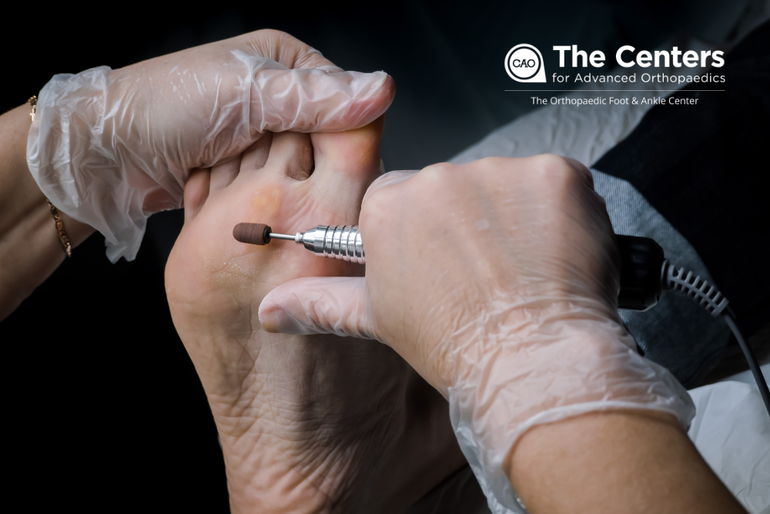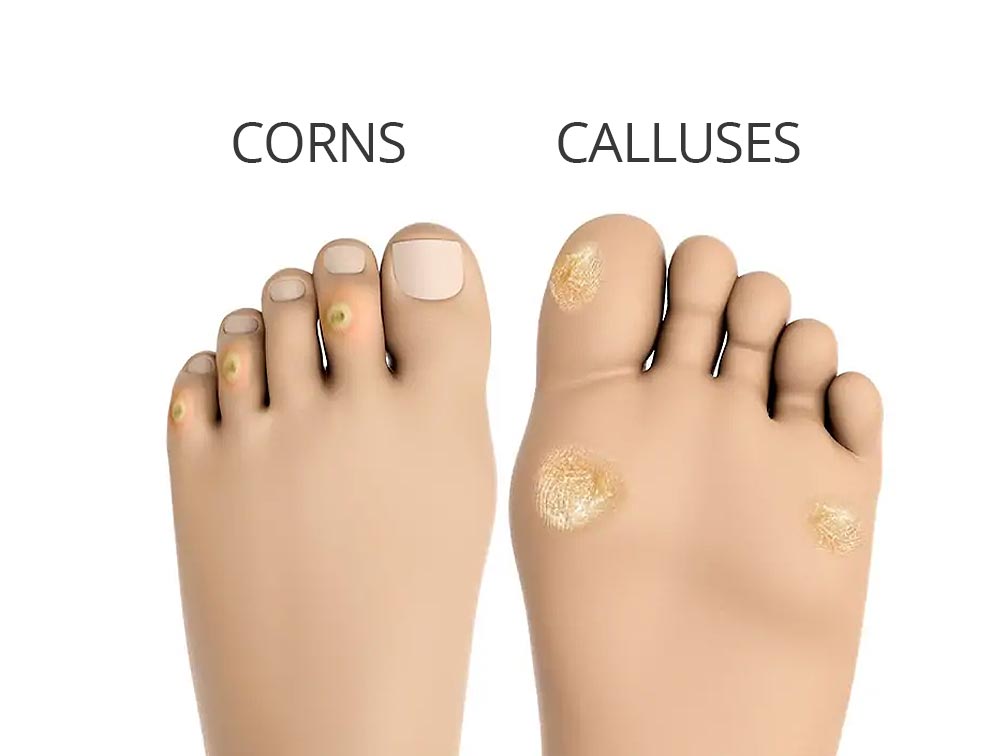The Centers for Advanced Orthopaedics is redefining the way musculoskeletal care is delivered across the region with locations throughout Maryland, DC, Virginia and Pennsylvania.
Why Do Corns and Calluses Form?

Corns and calluses are thickened layers of skin that develop on the feet due to repeated pressure, friction, or irritation. These protective layers form to shield the skin from injury, but they can also cause discomfort and pain. Understanding why corns and calluses appear, how to manage them at home, and when to seek professional help is crucial for maintaining healthy feet.
Why Do Corns and Calluses Form?
Corns and calluses arise primarily from the skin's defense mechanism against pressure and abrasion. They typically form on the bony areas of the foot where there is little cushioning, such as the tops and sides of toes, or on the soles of the feet at the ball or heel. Several factors contribute to their development:
- Ill-fitting shoes: Shoes that do not fit properly are a common cause. Tight shoes compress areas of the foot, while shoes that are too loose allow the foot to slide and rub against the material.
- Skipping socks: Going without socks increases friction between the shoe and the skin.
- Abnormal gait: An irregular walking pattern can distribute weight unevenly across the foot, increasing pressure on certain areas.
- Foot deformities: Conditions like hammertoes, bunions, or high arches can make one more susceptible to corns and calluses due to the altered structure and function of the foot.

Home Treatment Options
Many cases of corns and calluses can be managed at home with simple care techniques:
- Proper Footwear: Investing in well-fitted shoes with adequate support and a spacious toe box can prevent excessive pressure on any part of the foot. Over-the-counter padded shoe inserts can help redistribute pressure more evenly.
- Soaking and Moisturizing: Regularly soaking your feet in warm, soapy water softens corns and calluses, making them easier to reduce with a pumice stone. It's important to moisturize the feet after soaking to keep the skin supple and prevent cracking.
- Protective Pads: Applying non-medicated corn pads or moleskin can shield sensitive areas from further pressure. It's advisable to avoid medicated pads, as the acids in them can damage healthy surrounding skin.
When to Seek Professional Treatment
While many corns and calluses can be treated at home, there are circumstances where professional medical treatment from a podiatrist is necessary:
- Underlying Health Conditions: Individuals with diabetes, poor circulation, or other conditions that affect foot health should consult a healthcare provider before attempting home treatment, as they are at higher risk of complications.
- Persistent Pain or Infection: If corns or calluses are extremely painful, show signs of infection (redness, warmth, discharge), or do not improve with home care, it's important to see a podiatrist.
- Professional Removal and Prevention: A podiatrist can safely trim or surgically remove severe corns and calluses. They can also provide custom orthotics or corrective footwear to prevent recurrence, and offer advice tailored to your specific foot health needs.
Regular foot care, wearing appropriate footwear, and being mindful of the signs that indicate the need for professional help are essential steps to prevent and manage corns and calluses. By taking proactive measures, you can keep your feet healthy, comfortable, and free from pain. If you're dealing with persistent foot pain from corns and calluses, consider consulting with a podiatrist at The Orthopaedic Foot & Ankle Center in Northern Virginia.